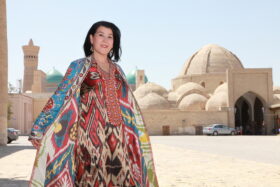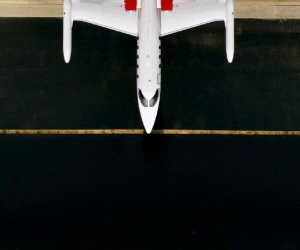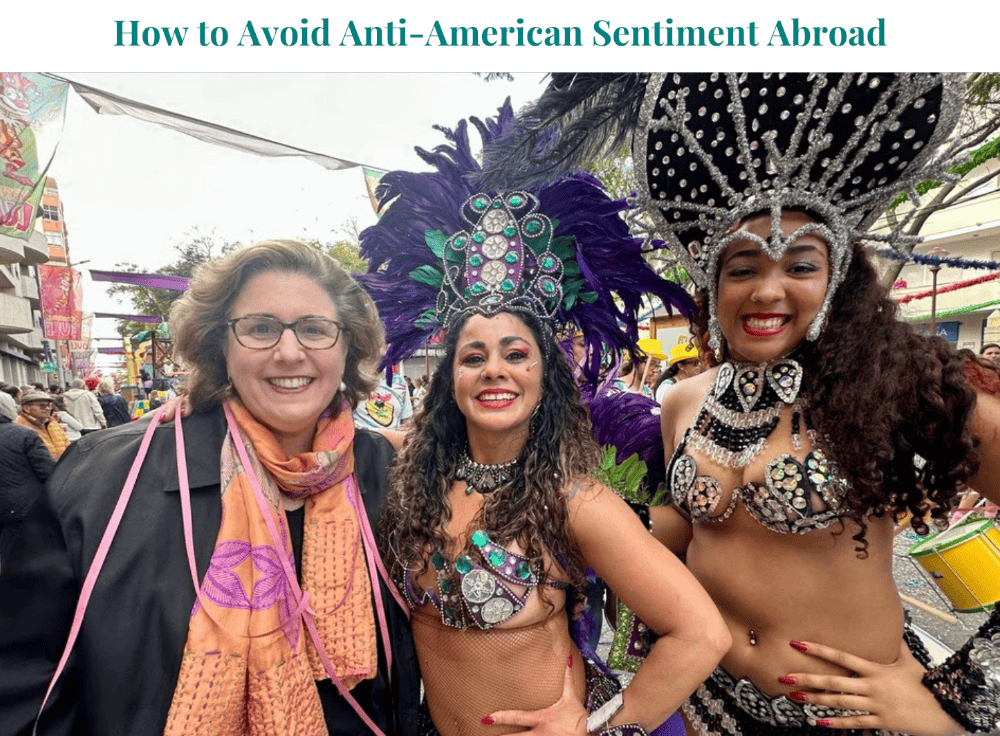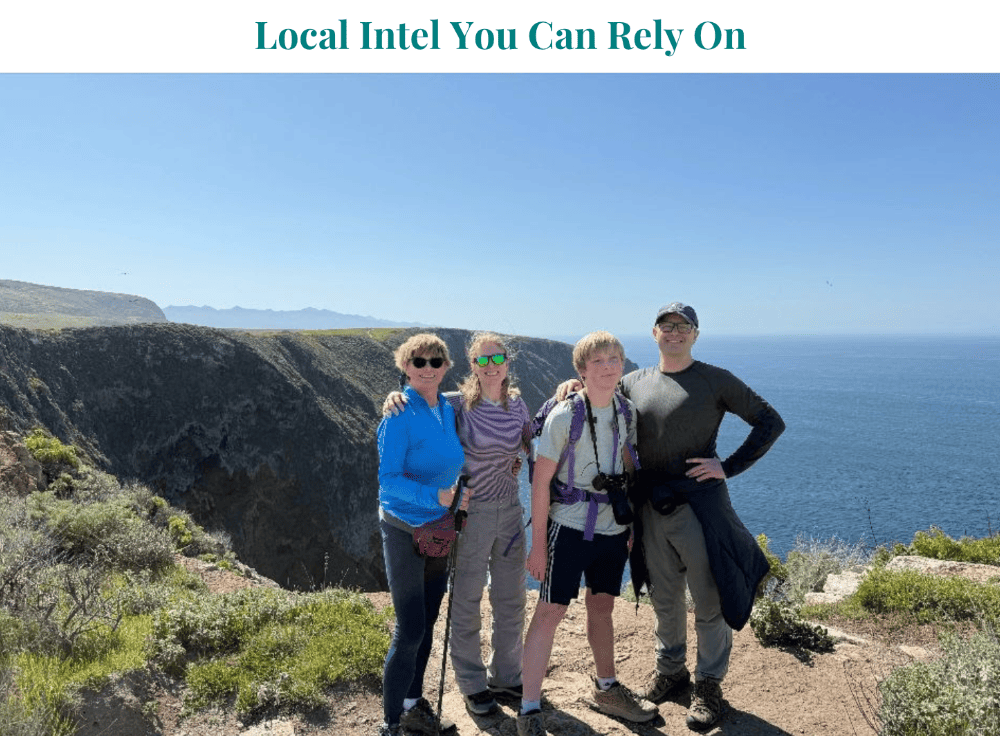Uzbekistan and the Silk Road: Insider’s Guide
 The Tilya Kori Madrasa is a UNESCO World Heritage Site in Samarkand. Photo: Zulya Rajabova
The Tilya Kori Madrasa is a UNESCO World Heritage Site in Samarkand. Photo: Zulya Rajabova
The insider advice on this page is from one of Wendy’s Trusted Travel Experts for Central Asia and the Silk Road: Zulya Rajabova of Silk Road Treasure Tours.
Zulya grew up in Uzbekistan (her hometown, Bukhara, is one of the legendary cities of the Silk Road trading route) and returns often to visit her large and charismatic family—the same family that her travelers are often lucky enough to meet. Because Zulya has had a home in the U.S. since 2003, she fully understands what sophisticated Americans want to see and do amid the stunning landscapes and ancient sites of Central Asia (including all five “Stans”), and she can also address any safety concerns they might have. Her personal contacts at museums, exhibition sites, and performance companies translate to exclusive access for her travelers, and the encounters that she orchestrates with artisans and businesspeople help bring alive aspects of the culture both ancient and contemporary.

Built in 1958, the Lotte Tashkent Palace has a central location in the city. Photo: Tashkent Palace
Where to Stay and Eat
Best-value splurge hotels
The Lotte Tashkent Palace, in a prime location just a short walk from Tashkent’s major sights, provides four-star comfort and excellent service. Request a quiet room at the back, as there is often a sound-and-light show at the fountain across the street. Zulya’s travelers get early check-in, late checkout, and upgrades for a special occasion.
The Mercure Bukhara, which opened in 2022, is the most luxurious boutique hotel in this ancient city. Reflecting a modern take on classic Central Asian architecture, the Mercure offers large rooms decorated in a spare, minimalist style, a 16th-century-style hammam, a terrace bar and restaurant with views over the old town, and a superb location that is a mere 10-minute walk to the major sights.
Best bang-for-your-buck hotels
Boutique Sasha & Son, a 16th-century Jewish merchant’s home in the heart of ancient Bukhara, has huge rooms decorated with Uzbek crafts and paintings, views of the Labi Khauz minaret complex, delicious homestyle food, peaceful courtyards, and warm hospitality.
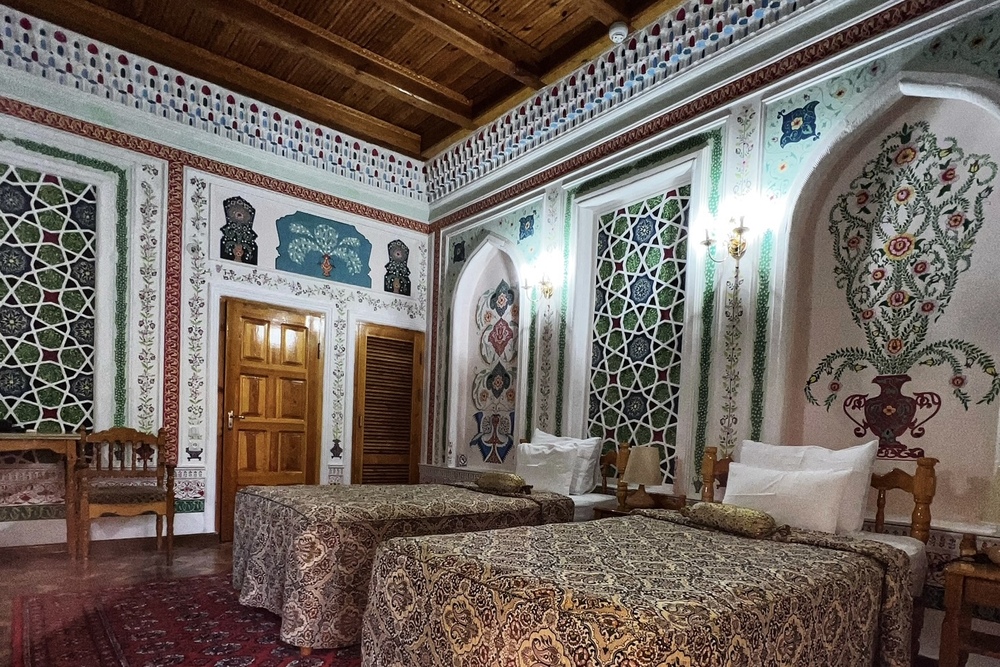
Rooms at Sasha & Son are decorated with local flair. Photo: Silk Road Treasure Tours
The Hotel Grand Samarkand Superior is a good family-friendly option in a quiet area 10 minutes from the Registan.
Restaurants the locals love
In Tashkent: Head to Afsona in the heart of the city for great service and super Uzbek food served on local ceramics. Its warm ambiance (and ability to accommodate gluten-fee and vegetarian diets) makes Afsona a favorite for welcome or farewell dinners. Traditionally decorated Caravan offers both Uzbek and international cuisine—sometimes you just need a salad.
In Samarkand, go to Platan for shurpa, a hearty soup made with meat, fat noodles, and fresh vegetables. Platan has both a traditional dining room and a fabulous rooftop terrace. The huge and lavishly decorated Samarkand Restaurant hosts music, dancing, and delicious Uzbek cuisine. Vegetarian and gluten-free diners will find options at Karimbek, along with music, dancing, and traditional ambiance.
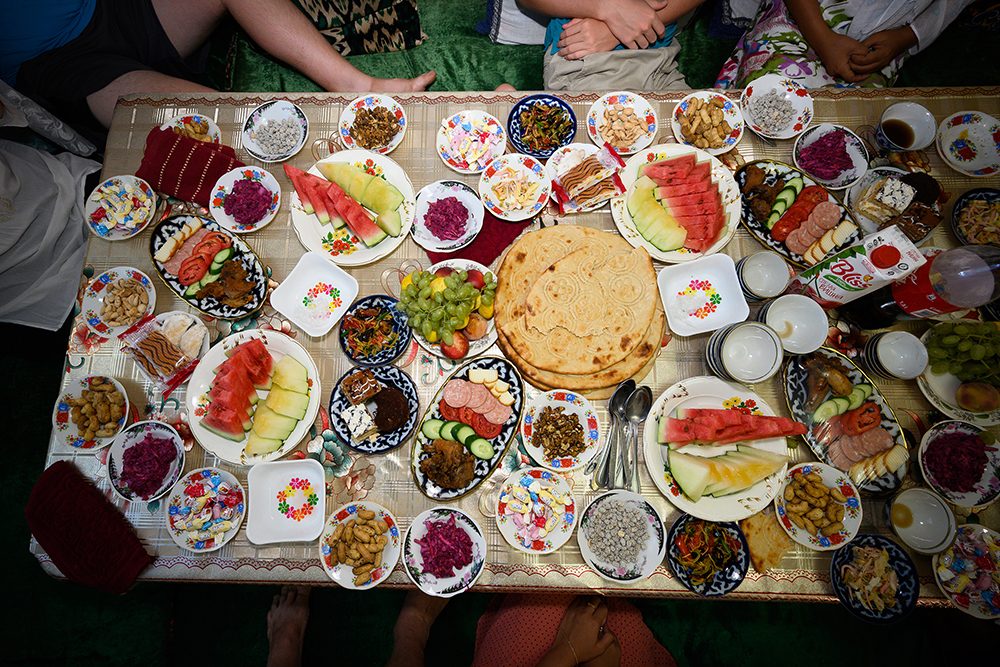
A typical feast in a local home in Bukhara. Photo: Tmothy Baker
In Bukhara: Osh Markazi makes a mean plov, the national dish of Uzbekistan (a savory mix of meat, vegetables, and rice). For something a little more swish, head to the Saffron Restaurant atop the Mercure Bukhara for sunset views over the old town.
In Khiva (see “Don’t miss”), Terassa offers rooftop dining in the old town; go for sunset cocktails (Zulya can tell you exactly where to take “the” photo with the sun setting behind the minarets) and stay for dinner. The popular Café Zarafshon, located just beside Islam Khodja Minaret, offers beautiful views, music, traditional Uzbek décor, and local ambiance.
Meal worth the splurge
Get a table at Labi Khauz Restaurant, in the heart of old Bukhara, beside an ancient pool surrounded by 14th-century mulberry trees. It’s been the city’s gathering place for centuries! Order either the shurpa or the shashlik (they serve meat, chicken, fish, and veggie versions of this shish kebab), and a cup of the special Silk Road spiced tea. Ask any local to recount one of the humorous stories of Khodga Nasreddin, a 13th-century philosopher who disguised his moral lessons in amusing anecdotes; his statue is nearby.
What to See and Do
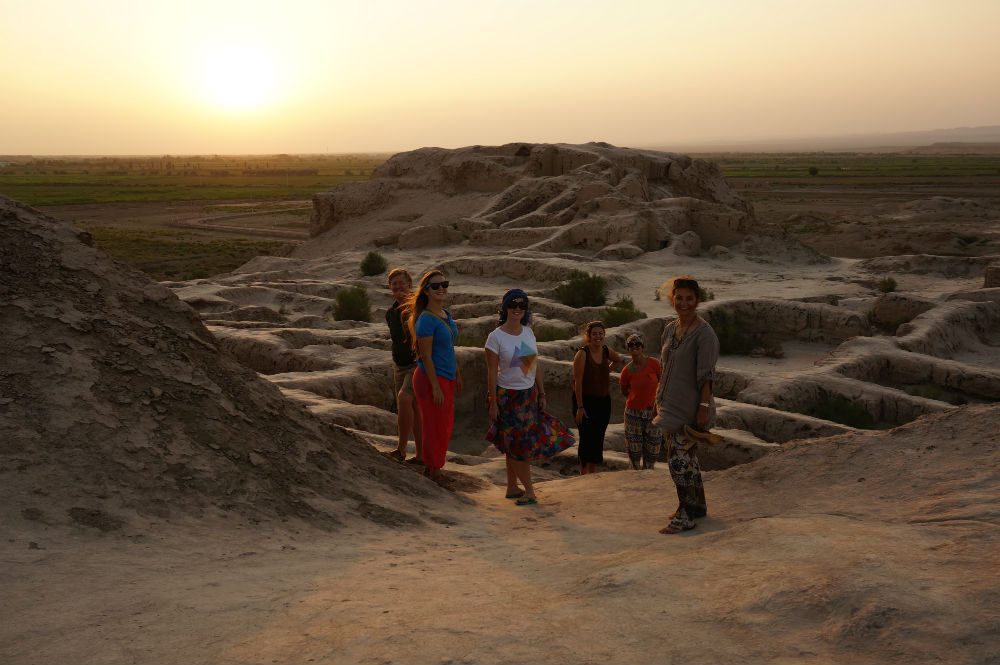
Uzbekistan is home to numerous archaeological treasures. Photo: Silk Road Treasure Tours
Don’t miss
The mud fortresses at Ayaz Kala, in the Karakalpak region, are a truly fascinating destination for adventure travelers and architecture buffs. Travelers can explore archaeological treasures from the fourth century B.C., ride camels, and overnight in a yurt (where they’ll be treated to a performance of traditional desert music under the stars).
Khiva. This city is a pedestrian-only “living museum” with original and restored medieval Islamic architecture of gorgeous green- and white-tiled adobe; it’s also the setting for dramatic desert sunsets and has lively restaurant and shopping scenes.
Hidden gems
The Chor Minor (“Four Minarets”) complex in Bukhara is one of the few examples of Mughal architecture in Uzbekistan. Each of the four towers is decorated in a different motif; some say they reflect the four religions known to Central Asians—Christianity, Buddhism, Zoroastrianism, and Islam.
A two-hour drive from Samarkand through the Hisar Mountains brings you to Shahrisabz, the 2,700-year-old “green city” and residence of Amir Timor (Tamerlane). Spend a day in this UNESCO-recognized city to visit artisans’ studios (Shahrisabz is Uzbekistan’s embroidery capital), hike in the mountains, picnic stream-side, and, if you time it right, attend a wrestling festival.
You’ll need three days to experience the riches of the historic Fergana Valley, which lies five hours from Tashkent by train or scenic drive, and was home to Babur, founder of the Mughal dynasty. Visit Margilan, the silk city that made Uzbekistan the heart of the ancient Silk Road. Experience the entire process of silk making, from silkworm breeding to weaving and dyeing, and wander through the ancient bazaar. Visit 3,000-year-old Rishtan, the cradle of blue ceramics, and Kokand, to see the palace of the last Kokand Khan. Cap off your explorations with a visit to Andijan, known for its horses and superb bazaar. Along the way enjoy the delicious melons for which the valley is famous.
Downtime
In Tashkent: Alisher Navoi National Park. This man-made park is an oasis of ornamental gardens, a lake, canals, cafés, and plazas. Head to the fountains behind the Palace of People’s Friendship, where you’ll find the Abul Kasim Madrassah, which now houses artisans’ workshops. There’s a nice view of the lake in Navoi Park and the bright blue dome of the Uzbek parliament, and on Saturdays the nearby Navruz Wedding House is a hive of celebrations.
Ninety minutes outside of Tashkent in the Tiyanshan Mountains sits the Amirsoy Mountain Resort. Ride the Swiss cable car for beautiful views of the green-sloped peaks. Afterward repair for a lunch of freshly caught fish paired with local wine, honey, and cheese.
Located in the countryside just beyond Bukhara, Mokhi Hossa Summer Palace (the Palace of Moon and Stars) was once the summer residence of the Emir of Bukhara; it’s a beautiful, peaceful spot for a stroll around the Asian- and European-influenced early-20th-century buildings.
Bragging rights
Uzbekistan is a hot destination for fashion and interior designers drawn by the gorgeous fabrics, detailed workmanship, and traditional designs in cotton, silk, and lavish embroidery. Zulya can introduce you to local fashion designers, textile experts, and jewelry makers, and you can get one-of-a-kind, fabulous ikat fabric or custom-embroidered clothing made.
How to spend a Sunday
Visit the bazaars and hammam in Bukhara. The historic center’s old trade domes (covered markets) are bursting at the seams with food, spices, fabrics, handicrafts, and souvenirs, most produced locally. They’re busiest and most colorful on Sundays, Thursdays, and during the Silk and Spice Festival in May. One of the most interesting is the Toki Zargaron trade dome, where you can find fabulous jewelry, the best embroidery and silk items, and even carpets. Afterward, stop for tea and perhaps lunch at the chaikana of either the Labi Khauz complex or the Bolo Hauz, in the park opposite the Ark. Then make the short walk to the city’s hammam, or Turkish bath, for a massage (best to book ahead); the well-preserved stone domes and corridors here date from the 16th century. Relax and reenergize in the hot and cold baths and enjoy the tasty local ginger tea.
Want to get back to nature? Head to Lake Charvak, just outside Tashkent, for some boating or swimming. Further afield, Mount Chimgan has cool summer temperatures, hiking vistas galore, and charming rural villages. In late spring and summer, take the old Soviet chairlift up with the local grannies for a picnic, or stop for coffee at the Beldersay hotel.
One of the best ways to enjoy Uzbek culture is to attend a festival; given that Uzbekistan has 27 different festivals every year, you are likely to catch at least one!
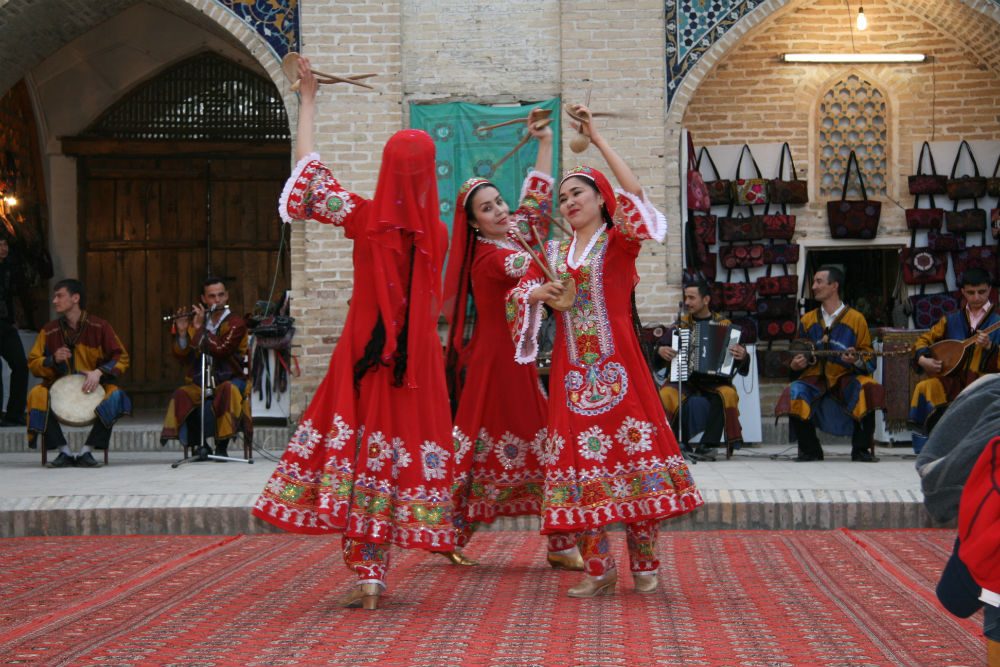
A folk performance in Bukhara. Photo: Silk Road Treasure Tours
Exploring the neighborhood
You need 12-14 days to do Uzbekistan justice. If you have another two days: Go to Tajikistan to visit the Fann Mountain lakes and charming villages—a trekker’s paradise. Time your visit for the spring equinox if you want to see the Navruz (New Year) Festival.
If you have an extra week, extend your trip to visit Kyrgyzstan; Bishkek is just a one-hour flight from Tashkent. From Bishkek, travel to beautiful Issyk-Kul Lake, surrounded by the Tiyanshan Mountains. Hike among alpine meadows, count stars through the hole in a yurt’s roof, watch nomadic Kyrgyz tribesmen hunt with golden eagles, and, if you are lucky, witness the horsemanship for which the Kyrgyz people are justly famous.
Best Times to Go

Mid-March to mid-June. In May especially, the weather is pleasant; travelers can access rural alpine villages and lakesides, overnight comfortably in a yurt, and go hiking, camel-riding, and white-water kayaking. There are also lots of popular festivals in spring (including a number of music events, the silk-and-spice festival, and the tulip festival), and weddings—Zulya’s travelers are always welcome at her extended family’s weddings. There are often upwards of 300 guests at an Uzbek wedding.
The second-best time is mid-August to mid-November. After the summer heat, the weather is once again comfortable for touring the ancient cities, hiking in the mountains, and camel riding in the Kizil Kum Desert.
Worst Time to Go
December and January. Temperatures can drop well below zero. There is snow in the upper elevations, making it difficult to access some sites, and photographic equipment may need protection from the cold—as will travelers!
Biggest Rookie Mistakes
Rushing the journey. While there are flights and high-speed trains between many cities, travel by road can be really rewarding (albeit bumpy) for getting to the less accessible cultural, architectural, and archaeological treasures. Along the way, you can stop in rural villages and tea chaikanas, ancient towns such as Jizzakh and Gijduvan, and local bazaars that only appear on certain days of the week—all of which offer amazing photo opportunities.
Exchanging too much money. There may be no opportunities to exchange it back after you’ve left the country (and where you can do so, you’ll need your receipts from the original transaction). Bring new paper currency or a debit card to withdraw cash from ATMs. Credit cards are not widely accepted outside of higher-end hotels.
The Souvenir
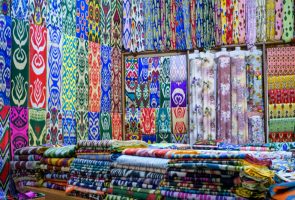
Textiles—silk scarves and brilliantly colored Ikat-patterned fabric especially. One of the most surprising handcrafts is suzani, a bold, heavy embroidery on rich fabric, often in gold and silver.
Must-Have Apps
The Currency app makes it easy to convert prices in Uzbek som into dollars, and vice versa; it’s free and works offline too.
WhatsApp is useful for communicating with friends and family at home and with guides in country.
Yandex Go is handy for calling local taxis.
Tipping Tip
Leave about 15 percent for your waiter.
Don't Forget to Pack
Coffee or tea. Uzbekistan is a nation of tea drinkers, and coffee is not available everywhere. The green teas here are refreshing and worth trying, but bring your own if you prefer black or herbal varieties.
Airport Intel
U.S. travelers under 55 years old need a visa; Zulya’s office can handle the processing.
Instagram Moments

The ancient city of Khiva is magical at night. The important architectural gems are all artfully lit, the adobe walls radiate warmth from the day’s sun, and the moon and stars shine brilliantly above the minarets in superclear skies. Get your shot from near the Kalta Minor or Islam Khodja minarets.
The Kalyan minaret, part of the Poi-Kalon complex in Bukhara, is known as the “lighthouse of the desert.” Here, the tallest minaret in Central Asia soars up through azure skies. Come at sunrise or sunset for the best light playing on the complex’s adobe walls, cut-away facades, and blue domes.

